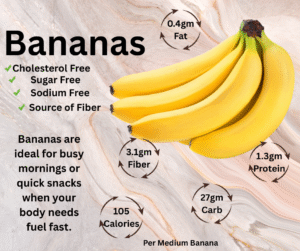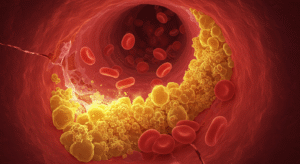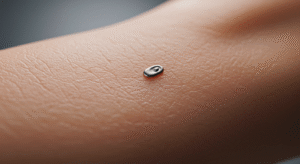Treat the cause, not just the symptoms.
If you’ve ever dealt with persistent knee pain—especially that nagging, grinding sensation under your kneecap—you know how frustrating it can be. You might have been told you have chondromalacia patella (the breakdown of cartilage on the underside of the kneecap) and given the standard advice: rest, ice, and quad-strengthening exercises.
But what if that’s not enough?
What if, no matter how many leg extensions you do or how much you stretch, the pain keeps coming back?
That’s because most knee pain isn’t just a knee problem—it’s a full-body movement problem.
And if we only treat the symptoms (the worn cartilage, the inflammation), we’re missing the real issue.
Today, we’re diving deep into why chondromalacia happens, what’s actually causing your pain, and—most importantly—how to fix it for good.
The Big Mistake: Treating the Knee in Isolation
Most traditional rehab programs focus on the knee itself—strengthening the quads, stretching the IT band, maybe some patellar taping. And sure, these can help temporarily.
But research shows that anterior knee pain (like chondromalacia) is rarely just about the kneecap.
A 2017 study in the British Journal of Sports Medicine found that poor hip and ankle control were major contributors to patellofemoral pain—not just weak quads (1). Another study in The American Journal of Sports Medicine showed that glute weakness significantly increases stress on the kneecap (2).
So if we only focus on the knee, we’re just putting a Band-Aid on a deeper issue.
The Real Culprit: Your Biomechanical Chain
Your body is like a linked system of pulleys and levers. If one part isn’t working right, another part has to compensate—and that’s where trouble starts.
With chondromalacia, the cartilage damage is just the end result of a chain reaction that usually starts somewhere else: your hips, your ankles, or even your feet.
Let’s break it down.
1. Weak or Lazy Glutes (The Hidden Cause of Knee Pain)
Your glutes—especially the gluteus medius and maximus—are your body’s powerhouse for hip stability. When they’re weak, your thigh bone (femur) rotates inward, causing your knee to collapse inward (that “knock-kneed” position you see in squats or stairs).
This misalignment, called knee valgus, forces your kneecap to rub against the femur unevenly—grinding down the cartilage over time.
🔹 The Fix:
- Clamshells (focus on slow, controlled movement)
- Banded lateral walks (keep tension the whole time)
- Single-leg glute bridges (no sagging hips!)
Research Backs It Up: A 2015 study in The Journal of Orthopaedic & Sports Physical Therapy found that 6 weeks of glute-strengthening exercises significantly reduced knee pain in people with patellofemoral issues (3).
2. Quad Imbalance (Why Your VMO Matters More Than You Think)
Your quadriceps aren’t just one muscle—they’re four. And the vastus medialis oblique (VMO), the teardrop-shaped muscle on the inner knee, is critical for keeping your kneecap tracking properly.
If your outer quad (vastus lateralis) is overactive (common in people who sit a lot or run with poor form), it pulls the kneecap outward, creating friction.
🔹 The Fix:
- Terminal knee extensions (short, controlled movements at the end range)
- Step-downs (focus on keeping the knee aligned over the toe)
- Isometric holds (like seated leg extensions with a 3-second squeeze at the top)
Research Backs It Up: A 2018 study in The Knee found that targeted VMO activation improved patellar tracking better than general quad strengthening (4).
3. Tight Hamstrings & IT Band (The Silent Knee Killers)
Tight hamstrings pull your pelvis into a posterior tilt, changing how forces travel through your knee. And a tight IT band (often from overuse or weak glutes) yanks the kneecap sideways, increasing pressure on the cartilage.
🔹 The Fix:
- Eccentric Nordic curls (for hamstring length + strength)
- Foam rolling the TFL (the muscle that tightens the IT band)
- Dynamic stretching (like walking leg swings)
Research Backs It Up: A 2016 study in The International Journal of Sports Physical Therapy found that combining hamstring mobility with glute work reduced knee pain more than quad exercises alone (5).
4. Stiff Ankles & Calves (The Overlooked Factor)
If your ankles can’t move properly (especially dorsiflexion, the ability to bring your shin forward over your foot), your body compensates by altering knee mechanics. Tight calves also increase load on the kneecap.
🔹 The Fix:
- Ankle mobility drills (like rocking lunges)
- Calf stretches with bent & straight knee (target both gastrocnemius and soleus)
- Barefoot walking (helps restore natural foot mechanics)
Research Backs It Up: A 2019 study in The Journal of Foot and Ankle Research found that limited ankle mobility was linked to higher rates of knee pain in runners (6).
Putting It All Together: A Step-by-Step Rehab Plan
Now that we know the why, here’s the how. A full-system approach to fixing chondromalacia for good:
Phase 1: Mobility & Activation (Weeks 1-2)
- Daily ankle mobility drills (3 sets of 10 rocking lunges)
- Foam roll TFL + IT band (30 sec/side)
- Glute activation before workouts (banded clamshells, 2×15/side)
Phase 2: Strength & Control (Weeks 3-6)
- Single-leg glute bridges (3×12/side)
- Step-downs with knee alignment focus (3×10/side)
- Nordic hamstring curls (eccentric) (3×6 slow reps)
Phase 3: Movement Retraining (Weeks 6+)
- Squat form drills (focus on knees tracking over toes)
- Gait analysis (fixing overstriding or hip drop)
- Plyometrics (only when pain-free) (low-impact jumps)
Final Thoughts: Stop Chasing the Pain
Chondromalacia patella isn’t a life sentence. But if you keep treating just the knee, you’ll stay stuck in the cycle of flare-ups.
The real fix?
- Strengthen the weak links (glutes, VMO).
- Mobilize the tight areas (hamstrings, calves).
- Retrain movement patterns (squat, lunge, walk).
Your knee is just the messenger. Listen to what it’s telling you—and fix the real problem.
References
- British Journal of Sports Medicine (2017) – Hip & ankle control in patellofemoral pain
- The American Journal of Sports Medicine (2014) – Glute weakness & knee stress
- JOSPT (2015) – Glute strengthening for knee pain
- The Knee (2018) – VMO activation & patellar tracking
- IJSPT (2016) – Hamstring mobility + glute work
- Journal of Foot & Ankle Research (2019) – Ankle mobility & knee pain







No comment yet, add your voice below!